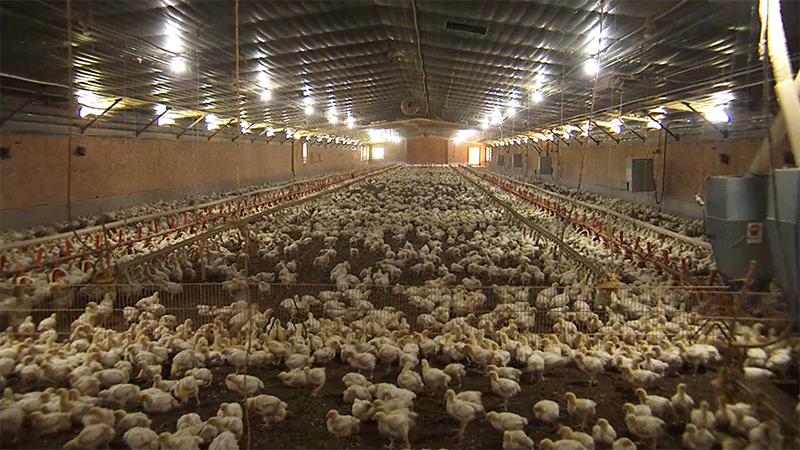16 May 4 Reasons Why Chickens are NOT Given Added Hormones
A nationwide survey revealed that 77 percent of Americans believe that chicken contains added hormones.
The reality? No chicken sold or raised in the U.S. is given added hormones.
In fact, the USDA has banned all hormones and steroids in poultry since the 1950s. No hormones or steroids are approved by the US Food and Drug Administration for use in poultry, and doing so via the water, feed or injection is specifically prohibited by law.
Chickens are bigger and grow faster these days because of traditional breeding, tailored nutrition, improved veterinary care and better living conditions. These all contribute to the healthier growth of chickens.
Here are the 4 main reasons why chickens are NOT given added hormones:
1. Hormone use is illegal in poultry production.
Since the 1950s, the U.S. government has banned all hormones and steroids in poultry. While it might be alleged that illegal use of hormones is occasionally practiced, as you’ll read below, you’ll come to understand why there is no logical reason to use hormones in poultry production.
2. Not only are added hormones illegal, added hormones are simply not needed.
Today’s chickens are definitely bigger, but it’s not because of added hormones (and it’s not because of genetic modification, either). Modern chickens are raised larger and healthier through improvements in breeding, nutrition, living conditions, veterinary care and overall bird health.
The larger growth of modern broiler chickens is a logical consequence of slow but consistent improvements in genetics, nutrition, management and disease control. Hormones are simply not needed in poultry production.
3. High cost.
Since a chicken growth hormone is not produced commercially, the cost would be extremely high. If 1 mg were to be administered to a broiler chicken, the cost would be far in excess of the value of the chicken itself. This makes no sense from a business standpoint.
4. The administration of hormones is extremely difficult.
Chicken houses hold thousands of birds. In order to administer hormones to a chicken, you’d have to pick up each one individually, twice a day, and inject each one with hormones. The logistics of this are nearly impossible and extremely inefficient.
Not only would the process of injecting hormones in chicken represent added cost for farmers and producers, but picking up chickens is potentially stressful for the birds and would likely hurt flock performance.
Curious to learn more?
This video from the U.S. Poultry & Egg Association explains the scientific, economic and legal reasons on why hormones are not needed or used by the U.S. poultry industry.



